在线臭氧分析仪 – OzoSense
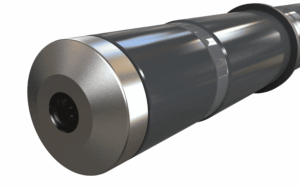
在线溶解臭氧传感器
Pi公司的OzoSense在线溶解臭氧分析仪由Pi公司设计,用于测量水中的臭氧浓度,安装和操作简单,具有无与伦比的稳定性、准确性和精密度,同时具有卓越的性价比。
OzoSense系列臭氧分析仪是当今世界上最先进和最好的臭氧传感器
OzoSense 系列传感器是一种对pH值变化不敏感的膜式传感器。不需使用任何试剂,非常稳定,并且大大减少了维护量,降低了整个使用周期的成本。
在线溶解臭氧传感器与控制器相连,组成世界级的在线臭氧浓度监测和控制方案。如需更多Pi公司的控制器的信息, 请点击。
OzoSense系列膜法安培臭氧传感器是一个双电极传感器,工作时施加了高电势,从而消除零点漂移。其独特的设计意味着根本不需要试剂或缓冲剂。
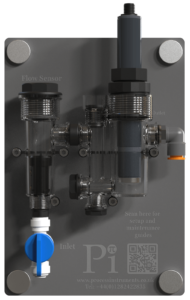 稳定可靠-卓越的臭氧过程控制-在线溶解臭氧控制器
稳定可靠-卓越的臭氧过程控制-在线溶解臭氧控制器- 适用于所有饮用水、工艺水和盐溶液
- 最多6个月的维护周期
- 最多3个月一次校准
- 不受余氯干扰
- 不受水中清洁剂的干扰
- PID控制-在线溶解臭氧控制器
- 数据记录和图表功能
- 通信选项如TCP/IP, Modbus, Profibus等等。
OzoSense系列的臭氧传感器和流通池可与不同的溶解臭氧控制器配套,加上不同的通信,显示,和控制选项,为你提供伟大的性能。
OzoSense系列的臭氧传感器不受氯等氧化剂的干扰。加上其出色的零点稳定性和校准稳定性,它非常适合监测无论是清洁或恶劣的环境下的残留的溶解臭氧。
OzoSense系列的臭氧传感器无需缓冲剂和试剂,这意味着它具备较低的成本和较长的维护间隔(6个月)。它正迅速成为仪器工程师性价比最高的选择。
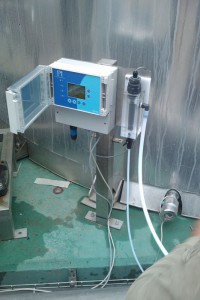
位于土耳其的在线溶解臭氧分析仪
OzoSense在线溶解臭氧分析仪现正安装于多个应用系统,包括:
- 瓶装水厂-臭氧监测仪
- 臭氧投加控制-臭氧控制器
- 偏远站点
- 冷却塔
- 食物生产
- 医院
- 二级臭氧化
- 废水臭氧化
任何需要在线测量水中残余臭氧的地方,都可以使用OzoSense臭氧监测仪。OzoSense特别适合在可靠性和易用性要求高的场合使用。该传感器可以抵抗洗涤剂的干扰,适用于很多洗涤的应用。
OzoSense系列在线臭氧监测仪可以配备自动清洗装置。用户可定义冲洗的时间间隔。自动清洗装置在食品、纸浆和造纸中特别有用,在许多可能会在样品中沉积固体的应用中也很有用。
有关臭氧分析仪的选项,如通讯、继电器和控制,请点击这里。
OzoSense系列在线臭氧监测仪可与其他传感器配套组成多参数系统。这样的灵活性在提供臭氧控制解决方案的同时可以节省大量的金钱。
| 文件名 | 文件类型 | 大小 |
|---|---|---|
| OzoSense | 手册 | 1mB |
| CRONOS® | 手册 | 935kB |
| CRIUS® | 手册 | 939kB |
| CRIUS® 远方控制 | 手册 | 975kB |
| CRONOS® and CRIUS® Control Options (EN) | 技术说明 | 649kB |
| Remote Access GPRS (EN) | 技术说明 | 593kB |
| Autoflush | 手册 | 656kB |
| Probe Fouling (EN) | 技术说明 | 316kB |
当你向海水中加入臭氧时它会和海水中的溴盐反应生成溴。Pi为这个应用提供了一个总溴传感器。请点击这里。
这取决于应用。在线臭氧传感器有一个非常低的漂移,所以有的一个星期、有的一个月校准它一次。
每3 – 6个月。
是的,OzoSense能抵抗洗涤剂的干扰。
不会。
如果储存在阴凉干燥的地方,两年。
余氯(<2%)和二氧化氯(<7%)对膜式传感器会有微小的影响。可能还有其他干扰。详情请与Pi联系。
PVC,不锈钢,有机玻璃(传感器+流通池)。
3°C – 50°C。
传感器一直在正电势下工作,所以与之相比,零点上的任何漂移都是可以忽略的,所以不需要零点校正。
使用手持设备。可以从不同的供应商处获得,几乎所有的供应商都使用比色DPD来测定样品中的氯浓度。
首先从仪器所在处取样品。第二,不要在浓度变化快的时候取样品,第三,使用质量好的手持式仪器,认真按照说明书操作。
在校准过程中,分析仪观察来自探头的信号的稳定性(变化率),如果它在倒计时中变化超过10%,则分析器阻止校准,以避免校准程序引入错误。
臭氧是氧的同素异形体,其化学式为O3。它是三个氧原子连在一起。它可分解为氧气。
溶解的臭氧是一种强氧化剂,因此可以用来消毒水。特别是它可以:
- 与锰发生反应,除去锰
- 消灭一些对氯有抗性的病原体,如鞭毛虫和隐孢子虫。
臭氧监测仪和臭氧分析仪没有区别。它们只是两个不同的人互换使用的表达方式。臭氧控制器是一个臭氧监测仪或分析仪,具有在线控制功能。所以对于Pi 的OzoSense来说,臭氧控制器、分析仪和监视器之间实际上没有区别。
如果您对溶解臭氧在线监测和控制有任何疑问,请随时联系我们。
您可能知道,大多数余氯、臭氧和二氧化氯分析仪使用手持式DPD设备来校准,但是…
…你知道在没有残留量的时候DPD并不能检测吗?
…你知道DPD的误差可以达到±100%吗?
…你知道Pi接到的大量的售后电话都与校准不当有关吗?
DPD是一种化学物质,当与含有氧化剂的水混合时,一定浓度的氧化剂会使其改变颜色。手持色度计测量通过有色溶液的光,根据光的吸收程度得出浓度值。它通常用于检测水中的游离氯、总氯、臭氧和二氧化氯等的浓度。
当DPD设备给出一个值时,它通常用于校准在线仪表……这就是Pi最早的时候进入的领域!
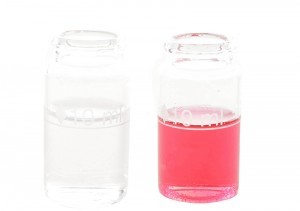
装有含氧化剂(右)和不含氧化剂(左)的水样的DPD小瓶
作为一家在线仪表制造商,我们必须了解DPD,以便在客户校准在线仪表遇到问题时帮助他们。
这期Focus On话题将着眼于:
- DPD的局限性(浊度、零氧化剂、漂白剂、pH和干扰因子)。
- 减小 DPD测量误差(采样、校准和清洁)。
- 注意事项(低浓度、粉色、被污染的玻璃瓶)。
- 少见的化学物质(测量溴、亚氯酸盐与二氧化氯)。
- 冲洗并重复:是否真的值得重复我的测量?
DPD的局限性是什么?
DPD不能很好地测量无氧化剂的水样。
DPD的工作原理是利用光的吸收,而样品中的浊度会给出正读数。这意味着如果样品中没有氧化剂,引入到样品中的任何浊度如未溶解的片剂或粉末将导致DPD测试出现很小的读数,这就是为什么…
DPD不能测量大约低于0.05 ppm的水样。
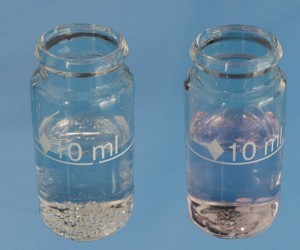
装有含微量氧化剂(右)和不含氧化剂(左)的水样的DPD小瓶
如果你怀疑你的样品中没有氧化剂,把小瓶放置在白色背景前。如果你看不到任何粉红色的痕迹,很可能你得到的任何读数都来自未反应的DPD片剂。
DPD不能测量高于6 ppm的游离余氯
(并且不会总是给出“高浓度”的读数错误显示)。
许多人都不知道,经过一定程度的氧化,DPD不会形成其特有的粉红色,而是将“漂白”形成一个清晰的溶液。这可能会导致人们认为在他们的水中很少或根本没有氧化剂,而事实上,有太多的氧化剂正在漂白他们的DPD。如果你怀疑你的样品被漂白了,在加入药片或药粉时,要注意有没有粉红色的闪光。注意,特殊的设备和试剂有可能用于测量6 ppm以上的氧化剂含量。
DPD不能在极端的碱度或pH值下测量。
DPD片剂、粉末和滴液含有缓冲剂,其将改变溶液的pH值,以促进DPD与氧化剂反应。在粉末或片剂中只有这么多的缓冲能力,如果你的样品具有极端的pH值或碱度,这可能会影响DPD手持设备的浓度读数。
DPD不能区分各种氧化剂,如:
氯、二氧化氯、亚氯酸、臭氧、有机氯化物、溴等,这意味着干扰是一个大问题。
DPD是一种奇妙的化学物质,因为它是一种非常多才多艺的着色剂,它赋予氧化剂我们所测量的颜色。这种多功能性是有代价的,DPD作为一种分析工具不是很具体,因此如果样品中存在其他化学物质,它们会干扰读数,给出不准确的结果。常见的干扰物包括二氧化氯(余氯测量,反之亦然),亚氯酸钠,臭氧,有机氯胺,过氧化物等等。
DPD不能区分颜色和浊度。
任何未溶解的固体,包括未反应的DPD片剂,都会影响读数。样品浊度应在零点测量中考虑。如果零点测量时具有高浊度,这将影响色度计的灵敏度,因为它必须进行校正,以消除未溶解固体的影响。允许样品中的固体在混合后几秒钟后沉降是抵消这种现象的最佳方法。
最小化DPD测量误差
这是一个易于阅读、可打印的检查表,以确保每次的DPD读数准确。
注意事项
上次您校准DPD设备是什么时候?
像所有的测量设备一样,手持式DPD色度计随时间的进行,需要校准。检查你的设备手册,看看它应该多久校准一次,如果你不记得上次校准它的时间,很可能它需要重新校准!
脏的玻璃瓶
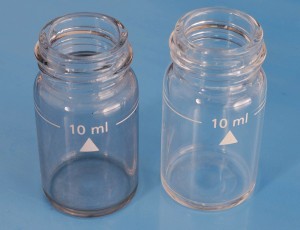 不干净的(左)和干净的DPD(右)小瓶
不干净的(左)和干净的DPD(右)小瓶DPD测试后形成的粉红色溶液会在玻璃上留下残留物,这会影响DPD读数。使用DPD工具包中的东西可以很容易地清除这些残留物。
自来水
如果你用普通的自来水清洗小瓶,由于饮用水中的余氯,留下的水滴会影响你的阅读。最好(但并不很实际)用去离子水清洗你的小瓶。如果去离子水不易得,你可以使用冷却的开水,因为煮沸可以除去任何氯。如果没有,那么在使用之前,确保瓶子完全干燥。
鲜为人知的化学
DPD具有广泛的干扰源。这意味着反复出现的问题有时可能是由样品的化学成分引起的。例如,亚氯酸根 (ClO2–)和二氧化氯都影响DPD,但二氧化氯安培传感器仅可测量二氧化氯。
DPD可用于检测溴,但DPD 1号片剂只可测量游离氯或总溴。由于化合溴和游离溴一样是有效的消毒剂,这通常不会造成太大的问题。但是一些安培传感器测量游离溴,无法使用DPD 1号片剂进行校准。有关测量海水中溴或氯的更多信息,请参见Pi关于海水氯化消毒的技术说明。
洗涤和重复测量
重复我的DPD测量有多重要?这不是浪费时间吗?
一个传感器只能和上次的校准一样好,而且你校准多精确它才能多精确。如果您需要您的传感器进行严格的过程控制,如泳池应用或投加控制器,那么必须重复DPD测试至少两次。重复测试很重要的原因主要是人为错误,但DPD片剂的变化也是可能的,或者可能您碰巧取到了浓度峰值。随着每一次重复,这些情况变得越来越不可能,使您对用于校准分析仪的值更有信心。
Pi推荐以下校准程序:
执行DPD测试,并将读数与分析仪进行比较。
- 读数是否在分析仪的10%以内? 如果是,则不需要标定。
- 如果读数不在10%范围内,重复DPD测试。
- 第二次测试是否在第一次测试的10%之内? 如果是,请将仪表校准到此读数。如果没有,继续重复DPD测试,直到两个连续测试在10%以内,然后将仪表校准到此读数。
在整个水处理工业中,由于积垢,许多应用很难保证仪表每天都正常工作。但是你知道吗…
…针对大多数类型的传感器,Pi公司都配备了自清洗和自冲洗系统?
…这些污垢清洗系统可以延长传感器的寿命,并大大减少维护量?
…Pi的自清洗/冲洗系统设计合理、简单且无故障?
问题是什么呢?
传感器积垢
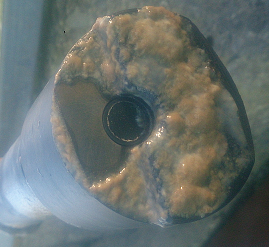
无论被监测的是何种工艺,在样液中经常有一些东西能够污染传感器,从而导致错误的读数。解决这一问题的办法是清洁传感器,但每种仪器的检查和清洁程序应如何设定?检查和清洁过于频繁,既费时又费钱。不够频繁,仪器会给出错误的结果,并可能过早地达到寿命。
有什么解决方案?
Pi公司的Autoclean 系统和 Autoflush系统。
Pi公司的自动清洗/自动冲洗系统简单、可靠且易于维护,可替代机械清洗方法,机械清洗方法会导致堵塞和破损。通过定期向传感器/探头喷出干净的水或空气,传感器在很长一段时间内保持清洁且无污垢。传感器清洗周期可通过Pi的控制器设定,用户可选择冲洗的时间和频率,无论应用程序有多脏,探头都能保持清洁。传感器本体或清洁附件中没有活动部件,除了一个简单的阀门,没有任何东西需要更换或检查。
Pi的自动清洗和自动冲洗系统可以使传感器无故障、无污染地工作数周,甚至数月。
针对不同的应用的不同的解决方案
Autoclean自清洗系统
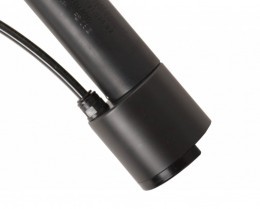
这个选项可以添加到我们的pH,ORP,浊度,悬浮固体和溶解氧(DO)传感器上。包括一个端盖,干净的水(或空气)流过传感器表面,以清除任何污垢。清洁由一个阀门控制。
Autoverify自检系统
如果使用空气来清洗溶解氧传感器,系统还可以自动验证传感器是否仍然正确响应。避免了经常取出传感器检查的麻烦。
Autoflush自冲洗系统
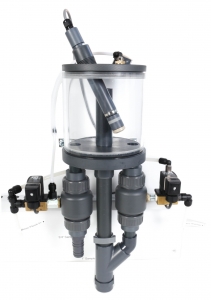
对于诸如余氯、臭氧和二氧化氯等需要安装在流通池中的传感器,Autoflush自动冲洗系统可通过内置的阀控制样液和并清洁水的进出和流动。用户可以设置冲洗间隔和持续时间,以确保传感器没有污垢。对于特别脏或顽固的污染物,可用温水作为冲洗水来帮助清洁。
有了上述选项,无论测量的应用或参数是什么,Pi公司都能够提供这样一个监测系统:不仅精确和稳定,而且还将保持无污染,节省操作人员的时间和金钱。
“来自Pi及其合作伙伴的支持是一流的。他们不仅要确保他们的设备完美,而且要确保整个过程也很好。五星!”
Anthony Glitto
Equip Solutions-美国伊利诺斯州
“英国Pi公司总有一个高水平的客户服务。我们与Pi的所有互动都超出了我们的预期。和你们一起工作总是一件很愉快的事。”
Rudi Tuffek
Allpronix -南非
“从ORP控制到安培法余氯传感器控制,无疑已经极大地改善了池水水质!”
Chris Tedeschi
Chris Tedeschi
“为客户服务不仅仅是解决问题或解决投诉,Pi非常胜任这些。他们通过技术和快速的努力提供良好的体验。”
Clovis Tuchapski
Buckman -拉丁美洲
“Pi的产品物有所值,代表了最好的市政饮用水分析仪。”
John Clark
Chemtrac –美国亚特兰大
“在过去的几年里,我们从Chemtrac购买了余氯和浊度分析仪,通过常规校准,探针准确测量了余氯和浊度,没有任何问题。我们对这个产品非常满意,并强烈推荐他们。”
Daniel "Buck" Owen
Ocoee公用事业区
“我们ECM ECO监控部门只能向所有其他潜在客户推荐Pi的产品和服务。 他们拥有非常复杂的各行业水质监测产品组合,态度友好,交货时间非常快,并及时响应我们所有的需求和问询。 我们的客户特别感谢颗粒计数器,它们帮助识别饮用水处理问题。流动电流监测器是优化昂贵化学品的一个很好的工具。”
Branislav
ECM ECO Monitoring-斯洛伐克











